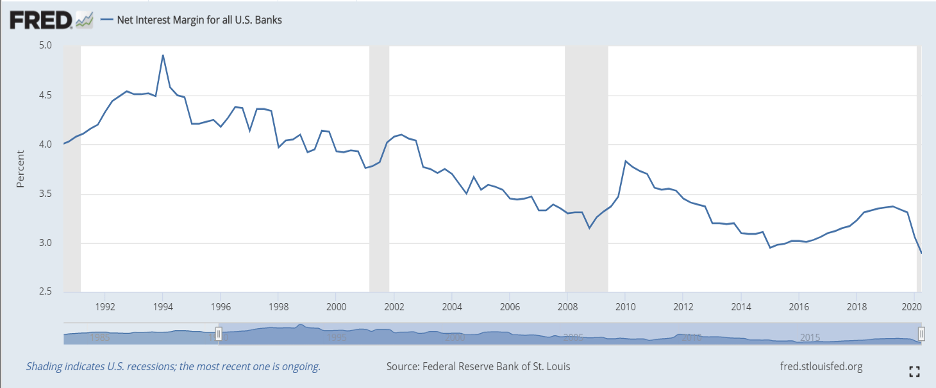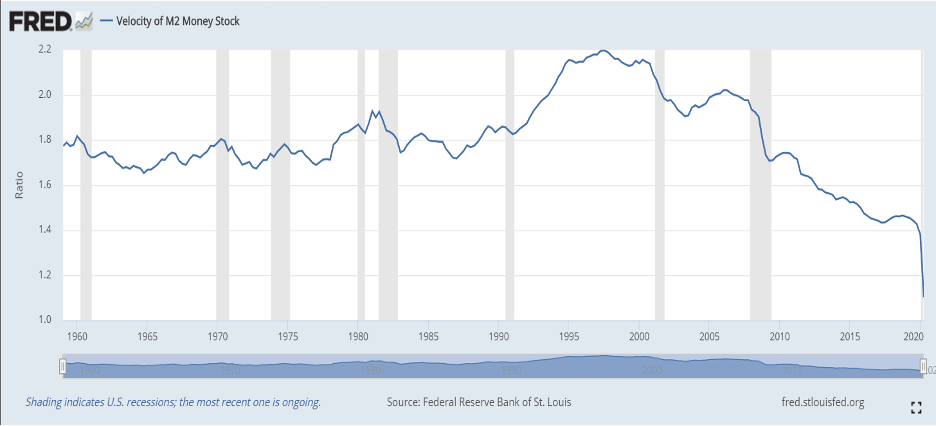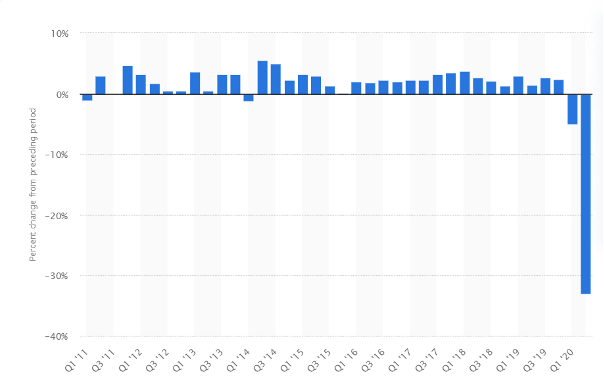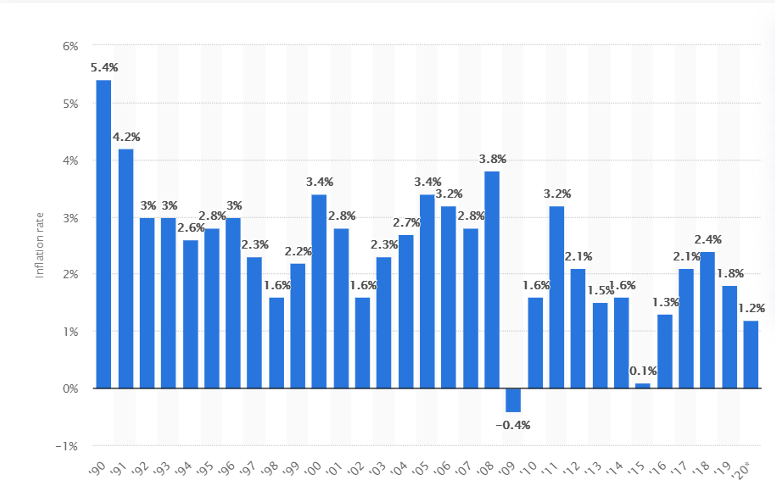Some of you will recognize the title from The Godfather.
The scene begins with Michael Corleone killing both a mob boss and a police
captain in a little Italian restaurant. The act sets off a crackdown on mob
violence from the police department but also causes an internecine battle
between the five mob families of the greater New York area. What does "Going to
the Mattresses" mean? It means you lay low for a while until the storm passes.
The whole crew moves into apartments run by "the family". They make spaghetti,
play the piano, and basically do nothing for a couple of months.
Banking is in a storm right now. No doubt. Check out the
most recently updated graph on Net Interest Margin from the Fed St. Louis.

The last reading is from the 2nd quarter of 2020.
It is 2.89%. If I were a betting man, I would bet that the 3rd a quarter will be lower. Actually, if you know me, you know I am a betting man,
but not on things like this.
Most talking heads focus their yapping on the yield of the 10-year
spot on the Treasury curve. It's an interesting talking point I guess but most
community-based financial activity takes place well inside that time frame,
more like 3-5 years. When I look at the history of the 3 year since the
pandemic set in, I see a grinding trade. The "high" point for the 3 year since
March was set on April 7th at a miserable 0.36% and the low was on
August 4th at 0.10%. In my former life as a trader, we called it a
grinding trade, because it grinds the life out of you. It's slow, boring, and
painful. Granted, most people aren't portfolioing lots of 3-year Treasuries, so
I asked my mortgage experts where all of the production is coming out of the
agencies and it turns out that in the world of 30-year mortgages the most popular
coupon this month is a 2% pass-through (WAC = 2.91). So, in layman's terms, you
can buy a 30-year pool, with an average life of just over 5 years, at a price
of 103-16/32's and get an expected yield of about 1.25%. Or, if that seems a
little unbelievable (and it should), you can go into the most popular 15-year
cohort. It also has a 2% coupon. For this product, you would pay around 104 for
the 4-ish year average life and hope to book a yield around 0.95%.
The thing about going to the mattresses is this: Business
must go on. Granted, in The Godfather the business depicted is a little
sketchier than banking, but you see my point. Just because we are grinding away
at the millstone, you must remain strong to survive.
Let me switch gears on you slightly and discuss some of the
reasons for "the grind". I really believe that the first thing we should all be
watching is the velocity of money. For anyone involved in finance, this is
critically important. It tells us how fast and free the blood of our economy—namely
money—is flowing through the system. It's one of the four key variables
identified by economists throughout history in the classic formula M x V = P x
Q (The Equation of Exchange). It's also the least discussed and least observed.
Sometimes I feel like Don Quixote shouting from the rooftops (or was it
windmills?), exhorting the world to watch the velocity of money, only to be
ignored. This graph sends chills down my
spine.

This is directly related to the massive increase in money
supply (M). The Fed is trying to pump up both the P and Q (Prices and Output)
by force-feeding the economy buckets of cash. It's not working. For some
perspective, consider that in Q3 of 2010 the "M2 Money Stock" was around 9
trillion dollars. Over the past decade, that number has doubled to 18 trillion
dollars (reminder: a trillion has twelve zeroes).
What about the other side of the equation? It's a very logical question and it's not very pretty. Let's first take a peek at GDP ("Q" in the formula). I wanted to find a graphic that takes the raw numbers and makes a visual impact and I think Statista has done a fine job. Check this out:
Quarterly Growth of the Real GDP in the United States from
2011-2020

The last reading is again from the 2nd quarter,
and it comes in at a stunning negative 32.9%.
And just to complete our equation, here is the inflation rate
("P") for the last 20 years:
United States Inflation Rate from 1990 to 2020

Sorry for all the graphs, but I think it's important to
think about all four variables as we move forward.
To summarize:
- M is massively higher
- V is massively lower
- P is moderately lower
- Q is massively lower
If you are a reader of this blog, I imagine you have had some math in your background, so you know something has got to give to keep an equation in balance. Sadly, as we have discussed at length in previous posts, we just don't know which factor will give. We do know that the Fed seemingly has the ability to print money ad infinitum, so perhaps we can rule out a big decrease in money supply. (Note: In my somewhat limited studies of money supply, it has never gone down YOY in recorded history. Rather, it's just the rate of growth that rises or falls). V is actually solved via the other three parts of the equation: It's the output, really. This leaves only the two variables of GDP and inflation, both of which are critical. It seems that in the final analysis, one or both of them will have to balloon. I sure hope it's GDP!
As investors, we have to go to the mattresses. This is not
the moment to be a hero. But there is still work to do.
One of the maneuvers we have seen many community banks
executing is the issuance of sub-debt at these historically low rates. I quoted
Gary Svec in my August 18th post entitled The Pack. Here is
the quote again in case you missed it:
"In these unique times, issuing sub-debt
enhances capital at a time of great uncertainty and, by investing in the sub-debt
of other conservative banks, the industry retains the interest paid on that sub-debt
at a time when good yielding assets are hard to find and net interest margin is
under pressure. Furthermore, no one has ever been criticized for having too
much capital during times of great uncertainty…or great stress."
Back to The Godfather: While the Corleone family and
the other families were laying low and staying out of trouble, one family was working
hard at reorganizing, ultimately coming out stronger. Banks that do the hard
work during this "grind" will come out stronger, more efficient, more
successful on the other side. Right now, we have to do more than just make
spaghetti and play the piano.
Final, final thought: We had almost 900 attendees at our
virtual Advanced Course last week. Technology is an amazing thing and this never
would have happened a year ago. Times are changing, seemingly faster every day.
Be sure to fill out the form below to subscribe to my weekly blog.


